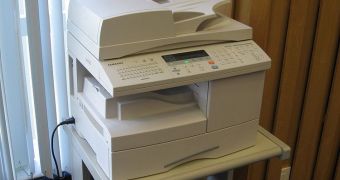Even recycling paper takes up a lot of time and resources, say experts at the University of Cambridge. For this exact reason, they developed a method that allows ink to be removed from paper via lasers.
This approach has the potential to reduce the amount of paper that needs to be produced every single year. In addition, it would also reduce the amount of resources necessary for recycling, since the same machines that do the printing may do the unprinting as well.
According to the research team, each sheet of paper could undergo this process up to 5 times before it has to be discarded. This could translate into millions of dollars in savings for customers, as well as in a vast number of trees avoiding a grim fate.
The research was coordinated by the head of the low-carbon materials processing group at the university, Julian Allwood, who worked together with PhD student David Leal-Ayala, Technology Review reports.
The investigators say that the trick with this new technique is to conduct the removal process without causing heat damage to the cellulose fibers making up the paper itself. The way they decided to go about doing this was to vaporize the ink at very high speeds.
The way this can be achieved is by using picosecond-long, green laser pulses. A picosecond lasts for one millionth of one millionth of a second. The process works because printing toner is considerably darker than the underlying white paper.
This means that it will absorb the vast majority of light emitted by the lasers, whereas the substrate will largely remain unaffected. If the laser pulses were any longer, the heat trapped in the toner would eventually transfer to the paper, damaging it.
Details of how the technique works appear in the latest issue of the esteemed scientific journal Proceedings of the Royal Society A. The team says that this technique at worst produces only half the carbon emissions recycling does.
At best, it only releases 5 percent the amount of CO2 the processes associated with paper recycling do.
Leal-Ayala admits that there are some issues that still need to be addressed, such as for instance how to include the picosecond lasers into actual photocopier. However, he is convinced that his team will find a solution to this problem.

 14 DAY TRIAL //
14 DAY TRIAL //